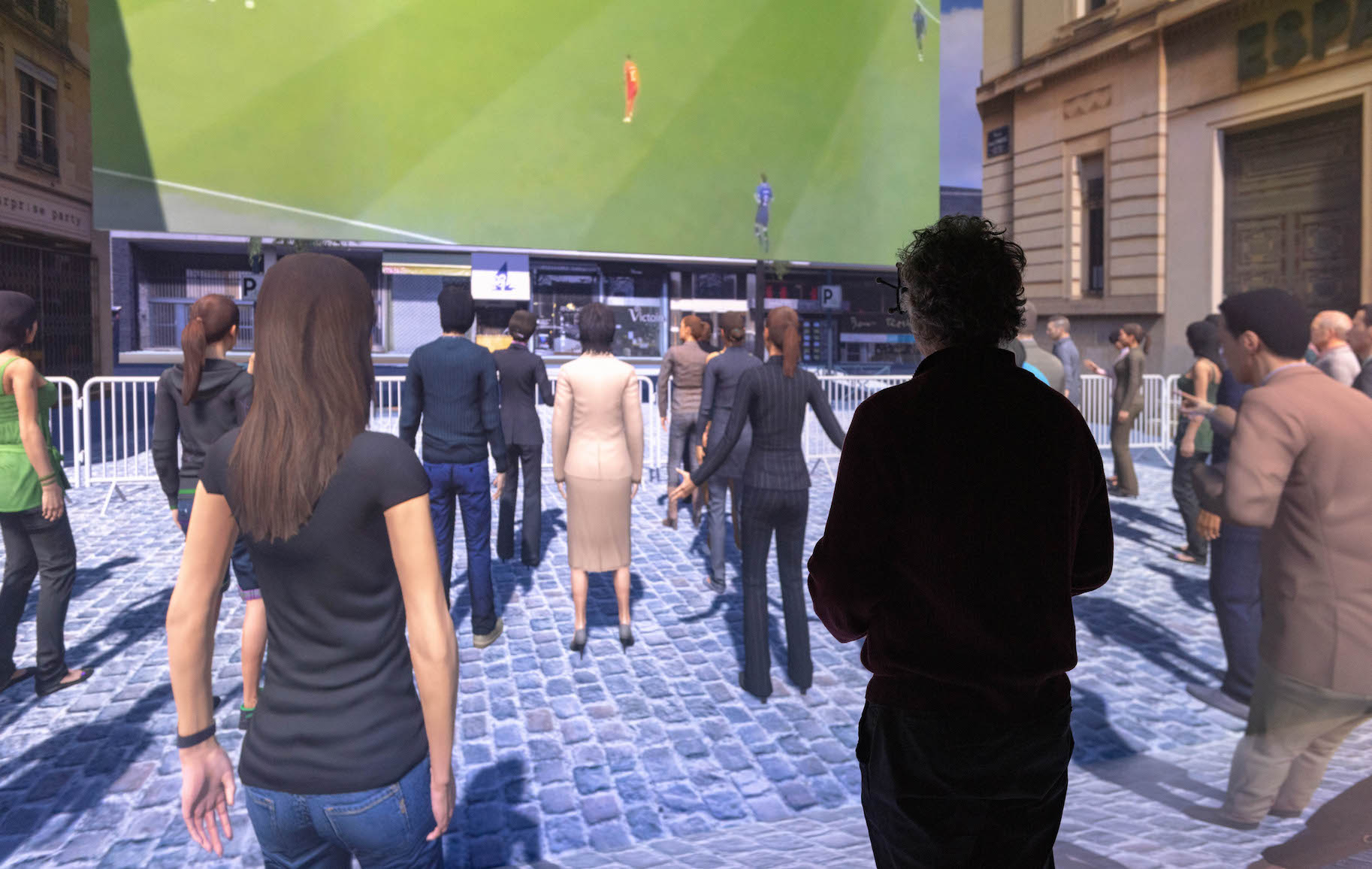‘Fan zones’ and security: virtual reality to support organisers
Date:
Changed on 14/08/2024

As part of the Paris 2024 Olympic Games, 26 ‘fan zones’ have been set up in Paris (and around thirty in all the departments of the Île-de-France region). These festive zones, which are open to the public free of charge during the weeks of the events and can accommodate an average of 500 people simultaneously, are designed to extend the Olympic experience well beyond the stadiums and gymnasiums, by enabling visitors to gather around the global event.
These are meeting places that, beyond the festivities, raise a number of questions for their organisers, particularly in terms of comfort and safety.
Verbatim
The main question a manager asks himself is ‘how will the crowd behave in the place I'm designing? In France, in particular, crowd safety is an important issue, not least to avoid accidents caused by crowd movements.
Auteur
Poste
Head of the VirtUs team and coordinator of the European CrowdDNA project
The Central Laboratory of the Paris Police Prefecture (LCPP), which works with the Paris Fire Brigade (BSPP) on risk prevention and coordination in the event of an incident, is working on practices to improve flow management in structures, including crowd simulation.
The LCPP has turned to the VirtUs project team and its expertise in modelling and simulation in the field of crowd management to use virtual reality to gain a better understanding of possible faults in facilities and improve future fan zones.
‘Simulators can provide indicators, but their reliability is limited. Virtual reality, on the other hand, makes it possible to recreate the planned facilities in silico in order to test them, i.e. to be able to visualise how people will behave in the presence of these facilities and in these spaces. This enables managers to answer the questions they have’, explains Julien Pettré, before adding: “Our role is not to provide them with new management techniques, but to provide them with important information to help them make the right decisions”.
The VirtUs project team, from the Inria Centre at the University of Rennes, is developing software that enables the reproduction of immersive populated scenes, where virtual and real humans coexist, with a sufficient level of realism for the experience lived ‘by computer’ and its results to be transposed to reality.
His research explores techniques for composing these shared virtual spaces: animation techniques for moving characters around realistically, simulation of groups and crowds of characters, and tools for creating virtual scenes.
These immersive simulations are then used to extend our knowledge of how humans interact with their alter egos: ‘The behaviour of an individual in a crowd is subject to many parameters of very different kinds, all of which are important: physiological factors (are they children, the elderly, etc.), psychological factors (is the crowd calm, excited, etc.), social factors (is the event taking place with friends, family, alone), and environmental factors (weather data, for example). All this is obviously superimposed on the very reason for the presence of these particular individuals in this particular crowd, their motivations, the dynamics of the crowd. This makes modelling a very complex task’, explains Julien Pettré.
The scientist, who was at HellFest for the third time this year to observe crowd behaviour and collect field data on the festival, hopes to go beyond an understanding of the crowd as a whole and analyse how each individual interacts with his or her neighbours, the environment and local dynamics, to finally understand the link between the behaviour of each individual and the crowd as a whole.